Chrysler 2010 Annual Report Download - page 52
Download and view the complete annual report
Please find page 52 of the 2010 Chrysler annual report below. You can navigate through the pages in the report by either clicking on the pages listed below, or by using the keyword search tool below to find specific information within the annual report.-
 1
1 -
 2
2 -
 3
3 -
 4
4 -
 5
5 -
 6
6 -
 7
7 -
 8
8 -
 9
9 -
 10
10 -
 11
11 -
 12
12 -
 13
13 -
 14
14 -
 15
15 -
 16
16 -
 17
17 -
 18
18 -
 19
19 -
 20
20 -
 21
21 -
 22
22 -
 23
23 -
 24
24 -
 25
25 -
 26
26 -
 27
27 -
 28
28 -
 29
29 -
 30
30 -
 31
31 -
 32
32 -
 33
33 -
 34
34 -
 35
35 -
 36
36 -
 37
37 -
 38
38 -
 39
39 -
 40
40 -
 41
41 -
 42
42 -
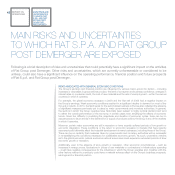 43
43 -
 44
44 -
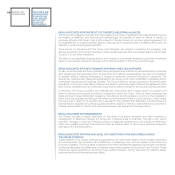 45
45 -
 46
46 -
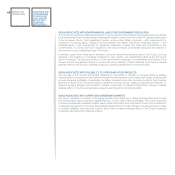 47
47 -
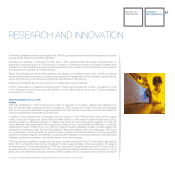 48
48 -
 49
49 -
 50
50 -
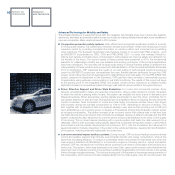 51
51 -
 52
52 -
 53
53 -
 54
54 -
 55
55 -
 56
56 -
 57
57 -
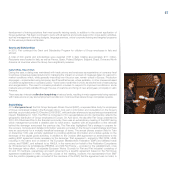 58
58 -
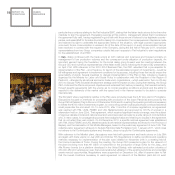 59
59 -
 60
60 -
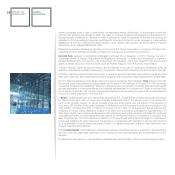 61
61 -
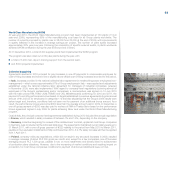 62
62 -
 63
63 -
 64
64 -
 65
65 -
 66
66 -
 67
67 -
 68
68 -
 69
69 -
 70
70 -
 71
71 -
 72
72 -
 73
73 -
 74
74 -
 75
75 -
 76
76 -
 77
77 -
 78
78 -
 79
79 -
 80
80 -
 81
81 -
 82
82 -
 83
83 -
 84
84 -
 85
85 -
 86
86 -
 87
87 -
 88
88 -
 89
89 -
 90
90 -
 91
91 -
 92
92 -
 93
93 -
 94
94 -
 95
95 -
 96
96 -
 97
97 -
 98
98 -
 99
99 -
 100
100 -
 101
101 -
 102
102 -
 103
103 -
 104
104 -
 105
105 -
 106
106 -
 107
107 -
 108
108 -
 109
109 -
 110
110 -
 111
111 -
 112
112 -
 113
113 -
 114
114 -
 115
115 -
 116
116 -
 117
117 -
 118
118 -
 119
119 -
 120
120 -
 121
121 -
 122
122 -
 123
123 -
 124
124 -
 125
125 -
 126
126 -
 127
127 -
 128
128 -
 129
129 -
 130
130 -
 131
131 -
 132
132 -
 133
133 -
 134
134 -
 135
135 -
 136
136 -
 137
137 -
 138
138 -
 139
139 -
 140
140 -
 141
141 -
 142
142 -
 143
143 -
 144
144 -
 145
145 -
 146
146 -
 147
147 -
 148
148 -
 149
149 -
 150
150 -
 151
151 -
 152
152 -
 153
153 -
 154
154 -
 155
155 -
 156
156 -
 157
157 -
 158
158 -
 159
159 -
 160
160 -
 161
161 -
 162
162 -
 163
163 -
 164
164 -
 165
165 -
 166
166 -
 167
167 -
 168
168 -
 169
169 -
 170
170 -
 171
171 -
 172
172 -
 173
173 -
 174
174 -
 175
175 -
 176
176 -
 177
177 -
 178
178 -
 179
179 -
 180
180 -
 181
181 -
 182
182 -
 183
183 -
 184
184 -
 185
185 -
 186
186 -
 187
187 -
 188
188 -
 189
189 -
 190
190 -
 191
191 -
 192
192 -
 193
193 -
 194
194 -
 195
195 -
 196
196 -
 197
197 -
 198
198 -
 199
199 -
 200
200 -
 201
201 -
 202
202 -
 203
203 -
 204
204 -
 205
205 -
 206
206 -
 207
207 -
 208
208 -
 209
209 -
 210
210 -
 211
211 -
 212
212 -
 213
213 -
 214
214 -
 215
215 -
 216
216 -
 217
217 -
 218
218 -
 219
219 -
 220
220 -
 221
221 -
 222
222 -
 223
223 -
 224
224 -
 225
225 -
 226
226 -
 227
227 -
 228
228 -
 229
229 -
 230
230 -
 231
231 -
 232
232 -
 233
233 -
 234
234 -
 235
235 -
 236
236 -
 237
237 -
 238
238 -
 239
239 -
 240
240 -
 241
241 -
 242
242 -
 243
243 -
 244
244 -
 245
245 -
 246
246 -
 247
247 -
 248
248 -
 249
249 -
 250
250 -
 251
251 -
 252
252 -
 253
253 -
 254
254 -
 255
255 -
 256
256 -
 257
257 -
 258
258 -
 259
259 -
 260
260 -
 261
261 -
 262
262 -
 263
263 -
 264
264 -
 265
265 -
 266
266 -
 267
267 -
 268
268 -
 269
269 -
 270
270 -
 271
271 -
 272
272 -
 273
273 -
 274
274 -
 275
275 -
 276
276 -
 277
277 -
 278
278 -
 279
279 -
 280
280 -
 281
281 -
 282
282 -
 283
283 -
 284
284 -
 285
285 -
 286
286 -
 287
287 -
 288
288 -
 289
289 -
 290
290 -
 291
291 -
 292
292 -
 293
293 -
 294
294 -
 295
295 -
 296
296 -
 297
297 -
 298
298 -
 299
299 -
 300
300 -
 301
301 -
 302
302 -
 303
303 -
 304
304 -
 305
305 -
 306
306 -
 307
307 -
 308
308 -
 309
309 -
 310
310 -
 311
311 -
 312
312 -
 313
313 -
 314
314 -
 315
315 -
 316
316 -
 317
317 -
 318
318 -
 319
319 -
 320
320 -
 321
321 -
 322
322 -
 323
323 -
 324
324 -
 325
325 -
 326
326 -
 327
327 -
 328
328 -
 329
329 -
 330
330 -
 331
331 -
 332
332 -
 333
333 -
 334
334 -
 335
335 -
 336
336 -
 337
337 -
 338
338 -
 339
339 -
 340
340 -
 341
341 -
 342
342 -
 343
343 -
 344
344 -
 345
345 -
 346
346 -
 347
347 -
 348
348 -
 349
349 -
 350
350 -
 351
351 -
 352
352 -
 353
353 -
 354
354 -
 355
355 -
 356
356 -
 357
357 -
 358
358 -
 359
359 -
 360
360 -
 361
361 -
 362
362 -
 363
363 -
 364
364 -
 365
365 -
 366
366 -
 367
367 -
 368
368 -
 369
369 -
 370
370 -
 371
371 -
 372
372 -
 373
373 -
 374
374 -
 375
375 -
 376
376 -
 377
377 -
 378
378 -
 379
379 -
 380
380 -
 381
381 -
 382
382 -
 383
383 -
 384
384 -
 385
385 -
 386
386 -
 387
387 -
 388
388 -
 389
389 -
 390
390 -
 391
391 -
 392
392 -
 393
393 -
 394
394 -
 395
395 -
 396
396 -
 397
397 -
 398
398 -
 399
399 -
 400
400 -
 401
401 -
 402
402
 |
 |

51
system will also be developed for application on hybrid vehicles. Beginning with new models produced from
1 January 2011, the new MAC directive issued by the European Union prohibits use of the refrigerant R134a
for air-conditioning on cars. The use of HFO-1234yf, which has been chosen as a replacement refrigerant,
will require modification of the entire system. HFO-1234yf is a fluid and has different properties to R134a,
which is a gas, including a lower refrigerant capacity, requiring optimization of the air-conditioning unit, and
is highly flammable, necessitating a review of all system components and evaluation of the impacts on the
work environment and filling systems.
Advanced vehicles, materials and processes
A central objective is to improve the eco-sustainability of vehicles and manufacturing process through the
development of economically sustainable solutions for products and processes. This objective is shared at
European level through the Green Cars Initiative, in which CRF participates actively as a member of the
Industrial Advisory Group.
The most significant achievements in this area during 2010 include:
Iveco Glider. This concept vehicle, presented by Iveco at the 2010 IAA International Motor Show in
Hanover, is the fruit of a creative collaboration between Iveco and CRF. It is a new vehicle concept that
offers high productivity and low environmental impact. The project focused on two key elements: energy
efficiency and on-board comfort and functionality. In terms of energy efficiency, researchers developed a
Kinetic Energy Recovery System (KERS), which enables the recovery of kinetic energy that would otherwise
be dissipated as heat during braking, in addition to a thermodynamic system based on a Rankine cycle that
recovers heat from the engine that would otherwise be dispersed through the exhaust and radiator. The
Glider also generates renewable energy on-board using highly efficient and flexible solar panels that take up
approximately 2 square meters on the roof of the cab and are capable of producing up to 2kW of energy.
Finally, any excess electric energy not used by the auxiliary systems is stored in an Auxiliary Energy Unit for
use as an energy source when the vehicle is stationary. Research into significantly reducing aerodynamic
drag, the use of new on-board energy management systems and the adoption of heat exchangers and low
rolling resistance tires also contributed to the dramatic reduction in consumption and emissions. With regard
to on-board comfort and functionality, the Glider was designed around the driver’s specific needs with the
cabin containing the latest technological solutions in terms of ergonomics, infomobility, lighting, climate
control and space management.
Eco-compatible and recycled materials. In 2010, CRF further increased its commitment to solutions
which address the environmental impacts (including CO2 emissions) from plastic components used in
vehicles. Tests were carried out with biopolymer matrix compounds and recycled end-of-life materials
reinforced with micronized natural fibers to enhance their structural characteristics, while also improving
aesthetics.
At the same time, CRF continued to monitor the percentage of recycled materials utilized in the Group’s
vehicles, increasing their use, particularly in non-aesthetic areas such as acoustic insulation. In 2010, analysis
also continued into the impacts on the automotive sector of general environmental regulations, such as
Classification Labelling & Packaging (CLP) and Registration Evaluation Authorisation and Restriction of
Chemicals (REACH). For the second of these two regulations an investigation was conducted on Substances
of Very High Concern (SVHCs) whose use may be restricted over the next few years. Alternatives are being
tested for all SVHC materials currently used in the Group’s vehicles. Finally, Life Cycle Assessments (LCAs)
were conducted to evaluate the environmental impacts of the new fluid refrigerant HFO 1234yf throughout
its entire lifecycle, comparing it with R134a and with CO2, and of phosphatization processes that could serve
as alternatives to the current process based on nanocomposites derived from zirconium salts.
